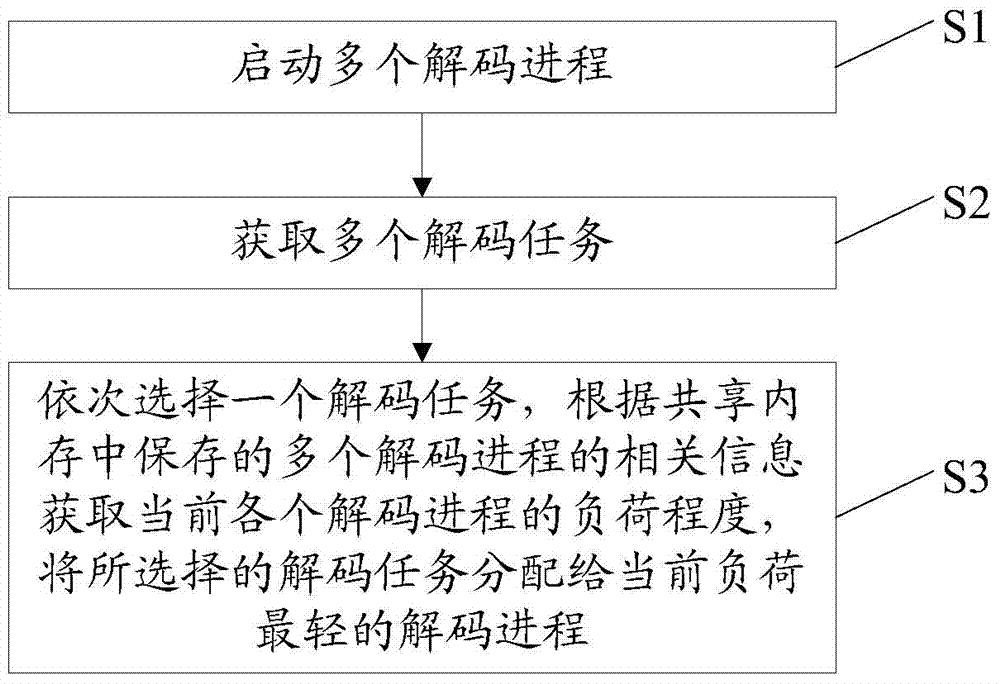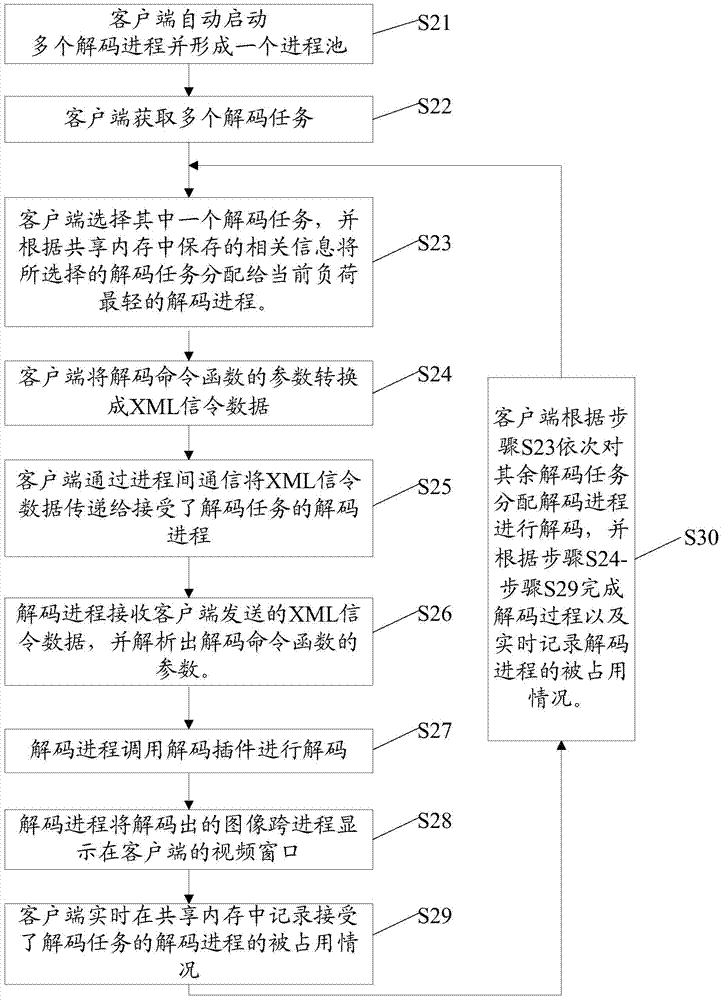Multi-process decoding method and multi-process decoding system
A decoding method and multi-process technology, applied in multi-program devices, resource allocation, etc., can solve the problems of high crash risk of a single decoding sub-process, failure to apply, and reduced monitoring system stability, etc., to achieve high-speed and smooth decoding of media codes Stream and display in real time, less impactful effects
- Summary
- Abstract
- Description
- Claims
- Application Information
AI Technical Summary
Problems solved by technology
Method used
Image
Examples
Embodiment 1
[0048] Such as figure 1 As shown, this embodiment provides a multi-process decoding method, which can be used in a client (CU) of a video surveillance system such as a PC. The client (CU) is used to provide a window for image display, and start, To manage, maintain and call the decoding process, the method includes the following steps:
[0049] S1: Start multiple decoding processes. When the client starts, that is, when the user starts it manually, it automatically starts multiple decoding processes. Both the client and the decoding process run on the same client, and the number of decoding processes automatically started by the client is determined by the memory configuration of the client.
[0050] S2: Obtain multiple decoding tasks. The client of the real-time monitoring system will browse many images recorded by multiple surveillance cameras at the same time. At the same time, the user will also perform playback and other operations that require decoding. Handles multipl...
Embodiment 2
[0069] Such as figure 2 As shown, the present embodiment provides a multi-process decoding method. There are two programs implementing the multi-process decoding method, and the two programs all run on a client computer: one is the client (CU) of the monitoring system , which is used to provide a window for image display, and start, manage, maintain and call the decoding process; the other is the decoding process (CUPlayer), which is the background process responsible for decoding. Specifically include the following steps:
[0070] S21: When the user starts the client on the client computer, the client automatically starts multiple decoding processes and forms a process pool, and the number of decoding processes automatically started by the client is determined by the memory configuration of the client. When it is started, the decoding process will create four decoding threads, each decoding thread can independently complete a decoding task, that is, it can complete the deco...
Embodiment 3
[0094] Such as image 3 As shown, this embodiment provides a multi-process decoding system, including:
[0095] Start module M1, for starting multiple decoding processes;
[0096] obtaining a module M2 for obtaining multiple decoding tasks;
[0097] The allocation module M3 is used to sequentially select a decoding task, obtain the current load level of each decoding process according to the relevant information of multiple decoding processes stored in the shared memory, and allocate the selected decoding task to the decoding process with the lightest load currently. decoding.
[0098] In the multi-process decoding system provided in this embodiment, each time the client assigns a decoding task, it will first obtain the load situation of the decoding process currently available for normal decoding, so as to assign the decoding task to the decoding process with the lightest load currently. Try to evenly distribute the decoding tasks to each decoding process, which can not on...
PUM
 Login to View More
Login to View More Abstract
Description
Claims
Application Information
 Login to View More
Login to View More - R&D
- Intellectual Property
- Life Sciences
- Materials
- Tech Scout
- Unparalleled Data Quality
- Higher Quality Content
- 60% Fewer Hallucinations
Browse by: Latest US Patents, China's latest patents, Technical Efficacy Thesaurus, Application Domain, Technology Topic, Popular Technical Reports.
© 2025 PatSnap. All rights reserved.Legal|Privacy policy|Modern Slavery Act Transparency Statement|Sitemap|About US| Contact US: help@patsnap.com



